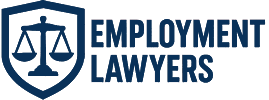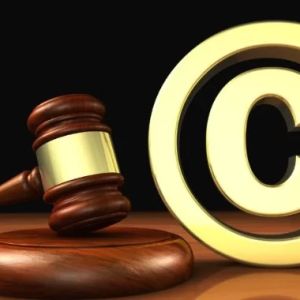- how-to-prove-fault-in-a-car-accident
- understanding-the-legal-definition-of-fault
- types-of-evidence-that-can-prove-fault
- real-life-cases-and-lessons-learned
- working-with-attorneys-to-build-your-case
- protect-your-rights-with-central-texas-employment-lawyers
1. How to Prove Fault in a Car Accident
Proving fault in a car accident can feel overwhelming—especially when you're injured, dealing with insurance adjusters, and trying to repair or replace your vehicle. Whether you're in Texas or any other state, understanding how to prove fault in a car accident is essential for winning your claim and recovering damages.
In this guide, we break down how fault is determined, what kind of evidence you’ll need, and how real cases have been successfully argued in court. With the right strategy—and possibly the right legal partner—you can tip the scales in your favor.
2. Understanding the Legal Definition of Fault
2.1 Fault Is About Negligence
In legal terms, fault is based on negligence. The party who failed to act with reasonable care—and caused the accident as a result—is considered at fault. For instance, a driver running a red light is often automatically considered negligent.
2.2 Texas Follows Modified Comparative Fault
In Texas, the law follows a “modified comparative fault” system. If you're less than 51% at fault, you can recover damages—though your compensation will be reduced by your percentage of fault. So even if you share some responsibility, it’s worth pursuing a case if the other party was primarily to blame.
3. Types of Evidence That Can Prove Fault
3.1 Police Reports and Crash Scene Documentation
Always call the police after an accident. Their report includes key facts—location, time, conditions, and initial fault assessments. In many cases, insurers and courts lean heavily on this document when deciding who’s at fault.
3.2 Witness Statements
Eyewitness accounts are powerful in car accident cases. A third party with no bias can confirm who ran the stop sign or who was speeding. Be sure to collect contact information from anyone at the scene who saw what happened.
3.3 Photos, Videos, and Dashcams
Photographic evidence is your best friend. Snap pictures of vehicle damage, skid marks, road signs, weather conditions, and injuries. If you or anyone nearby has dashcam footage, it can clearly show events unfold in real-time, which can be difficult to refute.
3.4 Medical Records and Injury Reports
Linking your injuries to the accident is crucial. Seek medical attention immediately—even if injuries seem minor. Delays in treatment can be used against you. Your medical record timeline helps prove the severity and cause of injuries sustained.
3.5 Expert Opinions and Accident Reconstruction
In more complex cases, accident reconstruction experts can help clarify fault using physics, vehicle data, and road conditions. Their analysis often holds significant weight in court or during high-stakes insurance negotiations.
4. Real-Life Cases and Lessons Learned
4.1 The Red Light Dispute
In one Austin case, two drivers claimed they had the green light. It wasn’t until dashcam footage surfaced from a third vehicle that fault was proven. The driver who ran the light tried to deny it—but video doesn’t lie. The victim received full compensation for medical bills and lost wages.
4.2 When Rear-End Isn’t Always at Fault
Rear-end collisions are typically the fault of the trailing driver. However, in a San Antonio case, a car reversed suddenly into another vehicle at a stoplight. Thanks to a gas station security camera, the rear vehicle was cleared of blame entirely.
4.3 The Case of Missing Witnesses
A Houston woman was sideswiped by a speeding SUV, but the other driver denied it. Luckily, she collected a witness statement from a cyclist at the scene. Without that statement, it would’ve been her word against his—and her claim likely denied.
5. Working with Attorneys to Build Your Case
5.1 Why Legal Help Makes a Difference
Even with solid evidence, navigating fault disputes and insurer tactics can be exhausting. Experienced personal injury attorneys know how to package evidence, negotiate aggressively, and, if needed, take your case to trial. That’s especially important in states like Texas with modified fault rules.
5.2 Avoiding Mistakes That Could Cost You
Without guidance, it’s easy to say the wrong thing to an insurance adjuster, miss a filing deadline, or undervalue your damages. A good lawyer ensures your claim is accurate, complete, and strongly supported by law and evidence.
5.3 Free Consultations Mean No Risk
Most law firms—like Central Texas Employment Lawyers—offer free initial consultations. You can ask questions, get honest assessments, and decide your next step without any upfront financial commitment.
6. Protect Your Rights with Central Texas Employment Lawyers
Proving fault in a car accident isn’t just about justice—it’s about securing the compensation you deserve to recover, repair, and move forward. Whether you're dealing with hospital bills, lost wages, or long-term disability, don’t go through it alone.
At Central Texas Employment Lawyers, we understand what it takes to prove fault and protect your rights. Our experienced legal team combines aggressive advocacy with compassionate support—because you need more than representation. You need results.
Get the clarity and confidence you need to take action today. Contact us to discuss your car accident case and let us help you prove what really happened—before the insurance companies rewrite the story.




